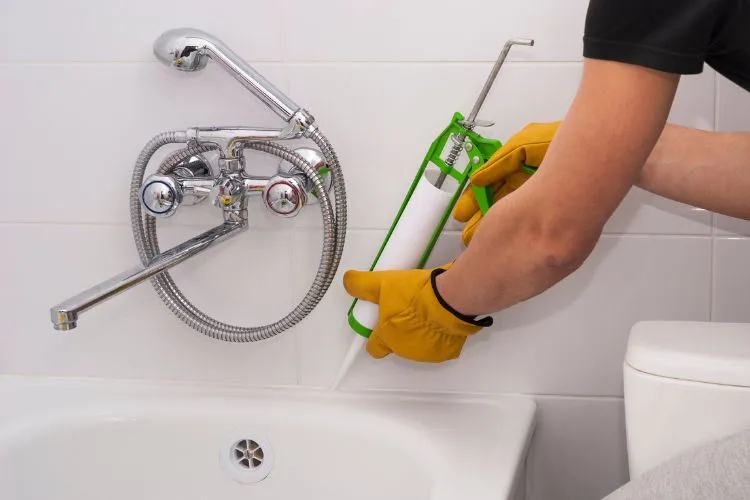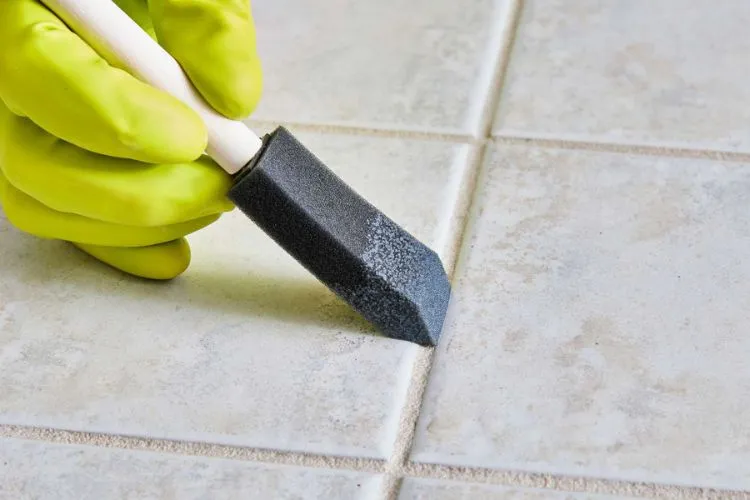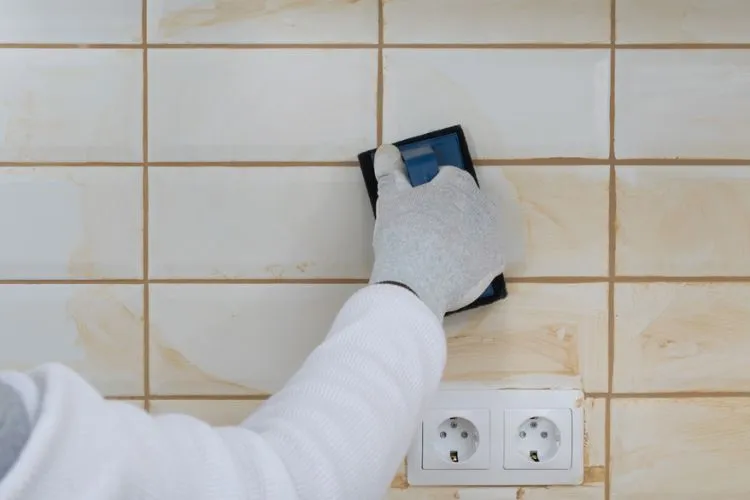Grout and caulk have long been staple resources in the home improvement arsenal. For homeowners and handypersons alike, knowing when and how to use these two can be the difference between a professional-looking finish and a shoddy job.
But, can you caulk over grout?
Well, this is a common question many people ask, and that’s why it needs a definitive answer.
To answer this, we will delve into the properties and applications of both grout and caulk, and discuss when it would be appropriate to use one over the other.

Can You Caulk Over Grout?
Now we arrive at the heart of the matter. The most accurate answer is yes, but it’s not always the best solution. The primary reason you may consider caulking over grout is if your grout starts to crack.
A neat bead of caulk can cover up these imperfections and prevent water from seeping in.
While caulking over grout can be a fast and temporary solution, it may not always be the best route. You might end up with a mismatched color or texture, taking away from the aesthetic appeal of your tiling job.
Moreover, a layer of caulk over the grout doesn’t address any underlying issues that caused the grout to crack in the first place.
When to Use Grout vs Caulk
To make the most of grout and caulk, it’s important to know their specific applications. On the one hand, grout is perfect when you’re looking to bond tiles together and provide a waterproof seal. The durability of grout makes it suitable for wide gaps and larger tiling projects.
On the other hand, caulk shines in its flexibility. It’s best used along the edges and corners, and where different materials meet, such as where a tub meets the bathroom tiles. The flexible nature of caulk allows it to expand and contract without cracking, thereby sealing these transitional areas effectively against water infiltration.
A Step-By-Step Guide to Caulking Over Grout
If you’ve decided to caulk over grout, here are the steps to do it:
First, remove the grout where you intend to apply the caulk. This is essential to avoid trapping moisture behind the caulk that can damage surfaces or lead to mold growth.
Using a grout remover or oscillating tool, carefully clean out the grout without damaging the surrounding tiles.

Next, thoroughly clean the area with warm water and a mild detergent and let it dry completely to ensure the caulk adheres properly. Then apply a thin, smooth layer of caulk over the area.
Smooth it out using a caulk smoother or your finger. Lastly, let the caulk cure as per the manufacturer’s instructions before exposing it to moisture.
Tips for Applying Caulk Over Grout
Applying caulk over grout requires precision and patience. Keep your application consistent and neat to ensure the finished job looks professional.
Always let the area dry thoroughly after cleaning it, as caulk doesn’t adhere well to wet surfaces. Finally, ensure you use a caulk suitable for the area you’re working on.
For instance, choose mold-resistant silicone caulk for high-moisture areas, such as bathrooms.
Preparation for Caulking Over Grout
Before embarking on the task of caulking over grout, a thorough preparation is key to ensuring a successful and durable finish. Begin by assessing the area where you intend to apply caulk; look for any significant damage or mold growth that may require more extensive repairs.
Choosing the right tools is crucial—arm yourself with a high-quality caulk gun, a sharp blade for removing old grout, and a vacuum or dustpan for cleanup. Protecting surrounding surfaces is also essential; use painter’s tape to shield edges and cover nearby areas with drop cloths to catch any debris.
This preliminary groundwork not only facilitates a smoother application process but also contributes to the longevity of your repair, establishing a solid foundation for your caulking project.
Pros and Cons of Caulking Over Grout
Caulking over grout is a method met with mixed opinions. Below are some pros and cons associated with this practice:

Pros:
- Quick Fix: Offers an immediate solution to minor cracks, preventing water from seeping in and causing damage.
- Flexibility: Unlike grout, caulk accommodates structural movements, reducing the likelihood of future cracks.
- Cost-Efficient: It can be a more affordable option compared to removing and re-grouting.
Cons:
- Temporary Solution: It doesn’t address the root cause of grout damage, potentially leading to recurring issues.
- Aesthetic Concerns: Caulk may not match the texture and color of existing grout, leading to visual inconsistencies.
- Durability Issues: Caulk generally has a shorter lifespan than grout, necessitating more frequent repairs or replacements.
In conclusion, caulking over grout might be suitable for quick, temporary fixes or in scenarios where flexibility is paramount. However, it’s not a long-term solution for underlying grout problems, and differences in appearance and durability should be considered.
Frequently Asked Questions (FAQs)
Can You Caulk Over Grout in a Shower?
Yes, you can. In fact, it’s common to apply caulk in areas where a tub or shower floor meets the wall. This is because caulk offers flexibility that grout lacks, accommodating any movement between these structures.
What Happens When You Caulk Over Grout?
Caulking over grout provides a protective barrier over cracks, protecting surfaces from potential water damage. However, note that this is usually a temporary fix and may not solve underlying issues that caused the grout to crack.
Conclusion:
In conclusion, while you can caulk over grout, it’s not always the optimal solution. Weighing the specific demands of your project — from the material of your surfaces to the condition of your existing grout — is key.
Sometimes, completely re-grouting parts of your tiles may be the best option. It’s always wise to consult with a professional when in doubt, to ensure the longevity and aesthetic appeal of your tiling job.


